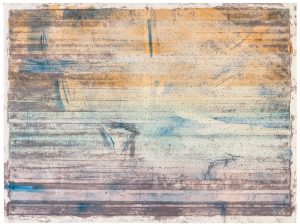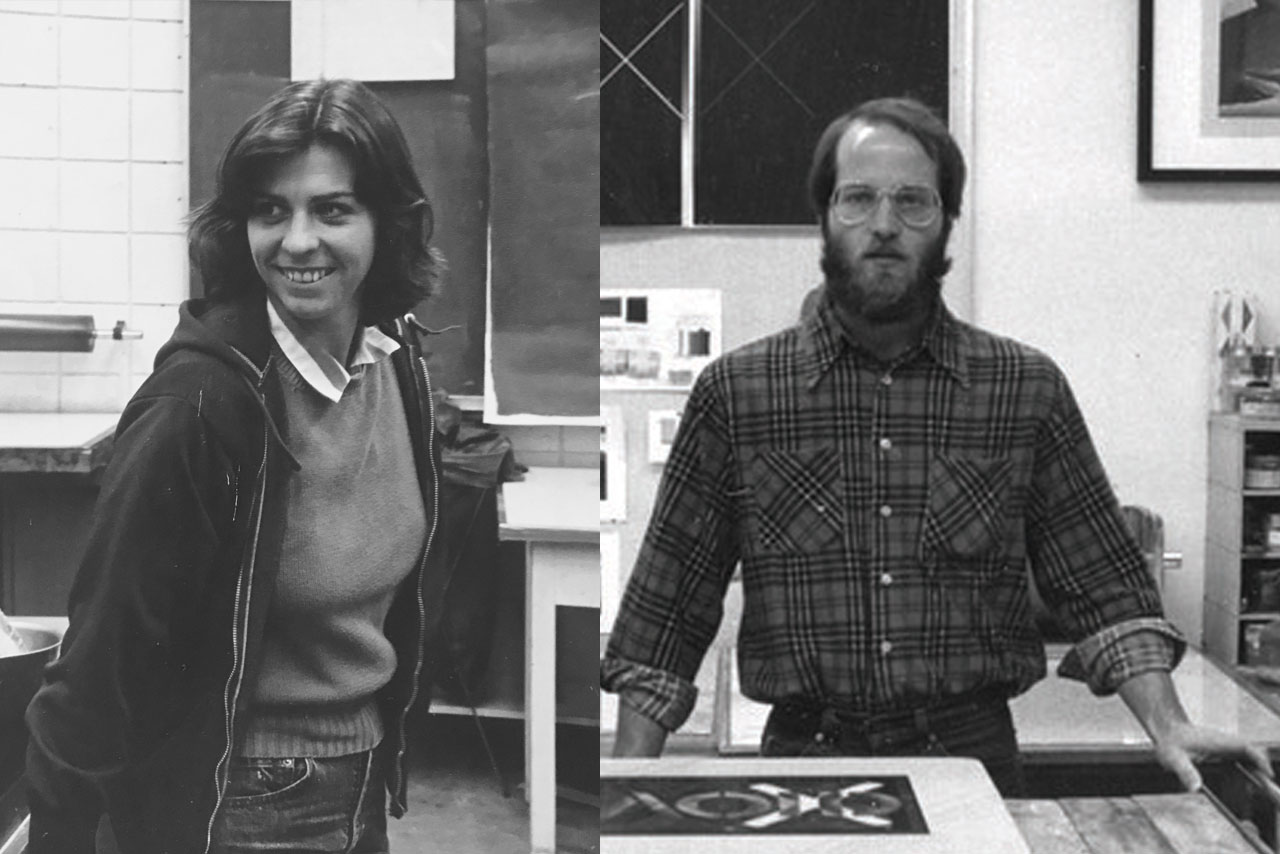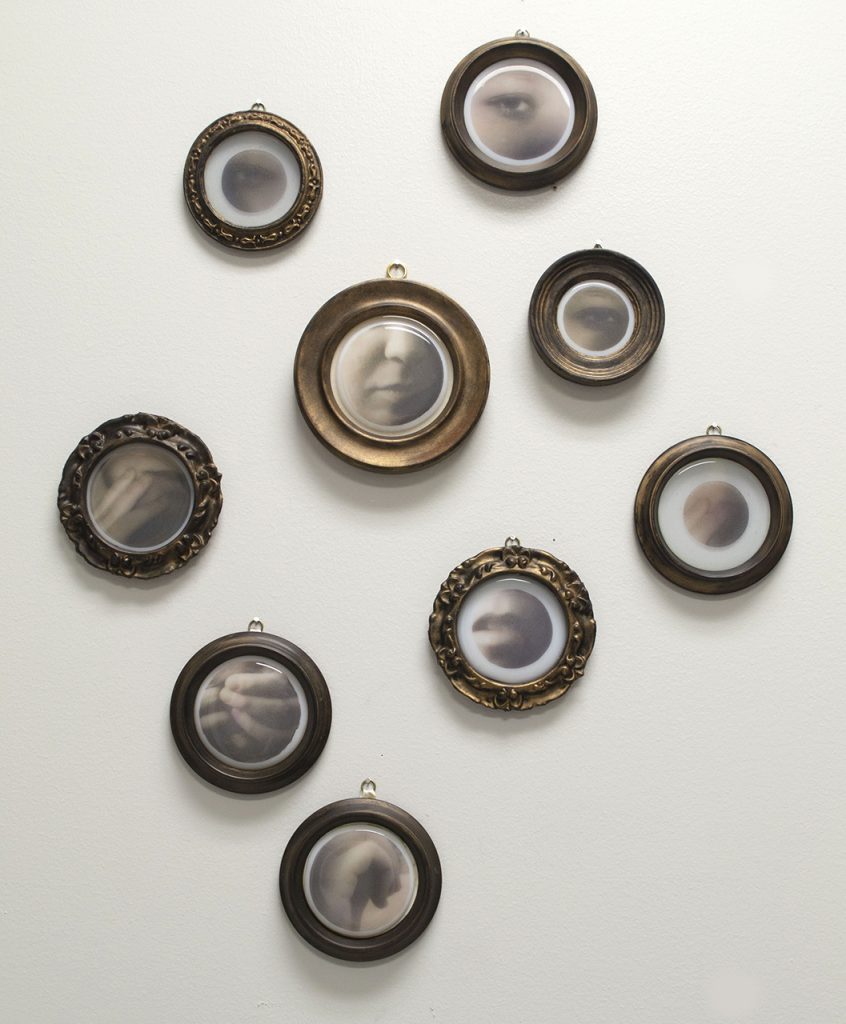Professor Sarah Smelser recently contacted Mary Jane Parker, Illinois State University printmaking alum, about her thoughts and memories of working at Normal Editions Workshop.
A native New Orleanian, Parker’s work is mixed media combining printmaking and painting techniques with glass and bronze sculpture. She received her BFA from Louisiana State University, Baton Rouge, and her MFA from Illinois State University. Mary Jane is the recipient of two Louisiana Division of the Arts Individual Artist Fellowships, a Pollock-Krasner Foundation Grant, a National Endowment for the Arts (NEA)/Southern Arts Federation Award for Excellence in Works on Paper, and an NEA Independent Study Fellowship. She has exhibited her work nationally and internationally and is represented in New Orleans by Arthur Roger Gallery. Mary Jane is the chairperson and teaches at the New Orleans Center for Creative Art.
SS: What did you learn in Normal Editions that you would not have learned in a printmaking course?
Being able to see so many different professional artists working as though peering into their studio was something I still feel was one of the most valuable things I experienced at Illinois State.
MJP: There are two things that I learned from being in grad school in and around Normal Editions that I try to impress upon my students now. One is I left with a vast amount of technical knowledge. I felt like I could tackle any print media with relative ease and blend it with other drawing and painting media. It allowed me to pick and choose what particular process I wanted to use based on a concept. With this knowledge at my fingertips, I could be more experimental, a strategy that worked well for me during some of the subsequent years when I did not have access to a print shop.
The second thing that was probably equal to or more important than the technical knowledge was the understanding of how artists, particularly artists who were not predominantly printmakers in their practice, approached the medium. I watched artists who came in with very rigid ideas of what they wanted to do and, as they worked with Richard Finch (then director of Normal Editions) would change and adapt their plan based on the restrictions of the print process. It was also revelatory to watch a painter approach the print media in a fresh and fluid way that was very unlike some of the prints that were being made at the time. Being able to see so many different professional artists working as though peering into their studio was something I still feel was one of the most valuable things I experienced at Illinois State.

Scratch Back by Dan Socha, five-color lithograph, 15″ x 20″ printed at Normal Editions by Richard Finch with assistance from Mary Jane Ingram, Leonard LaRoux, and Matt Blais in 1978
SS: What was the best artist collaboration you participated in, and why?
MJP: I arrived at Illinois State when Normal Editions was in its infancy. Many of the artists who were invited to work there were printmaking friends of School of Art faculty Jim Butler, Ray George, and Richard Finch. There were few artists who came in solely to make a print, but most were invited to participate in an exchange portfolio with the graduate students in the Illinois State program and with students that they would bring along from their own institutions. I think Normal Editions was just trying to spread the word about its existence. Richard worked with the visiting artist and everyone else made their own prints. One artist who I particularly enjoyed working with during one of these exchanges was Martin Garhart. He was very relaxed in the print shop and in between drawing on his stones and plates, he would move around and help those working on their own prints. I remember having planned out the print that I was going to do for the exchange and near the end of the week, just before the deadline, my last color did not work at all. Marty suggested a radical solution, going from a dark final color to something extremely transparent and bright. It was exactly what the print (entitled Interior: A Different Light) needed and I was able to finish printing in time.
Toward the end of my three years at Illinois State, more artists began to come solely to work in the contract shop. I helped with a print by Warrington Colescott. The print he made was a multi-colored etching of a group of hunters gathered around the same single deer. I often went back and forth between lithography and intaglio but I have always been more comfortable with intaglio so I enjoyed working on that particular print.
I can say that it was at Illinois State and Normal Editions that I began to understand the discipline it took to be successful as an artist
SS: How do you think your experiences at Normal Editions have shaped you as an artist?
MJP: I have not asked this question of myself often, but thinking back on it now, I can say that it was at Illinois State and Normal Editions that I began to understand the discipline it took to be successful as an artist. I learned how to be patient and work through a process to the end. I learned to make adjustments and not just give up if something didn’t turn out the way I had expected. I watched and became adept at process-oriented media and have subsequently been able to teach myself new techniques as they became available. And, probably most importantly, I learned to be flexible and make adjustments based on the idea rather than get pigeonholed by a process.
When each collaborator is willing to give up their preconceived ideas and desire to control the outcome the final product is always so much more interesting than either party had envisioned and, I think, stronger.
SS: What advice would you give artists, both those in school and out, who want to work collaboratively?
MJP: Many artists, especially when I was in grad school, lived a very solitary studio existence. Some artists were secretive about their process or plans. I think that is one of the reasons I was drawn to printmaking. At any time, there were students in the shop working, even if they were just meditatively graining a stone or mixing ink. When I was in Normal Editions at Illinois State, I often watched Richard or one of his assistants sitting down with an artist trying to solve a problem with a print. Between the two of them–the artist with the vision, and the printer with the technical knowledge to make it happen–they always ended up with something that neither had fully anticipated. I think at the time it did not really occur to me that this was collaboration, that term has become more popular in recent years, but it definitely was. Since then, I have had many opportunities to collaborate and witness collaborative projects between other artists and students. When each collaborator is willing to give up their preconceived ideas and desire to control the outcome the final product is always so much more interesting than either party had envisioned and, I think, stronger.




